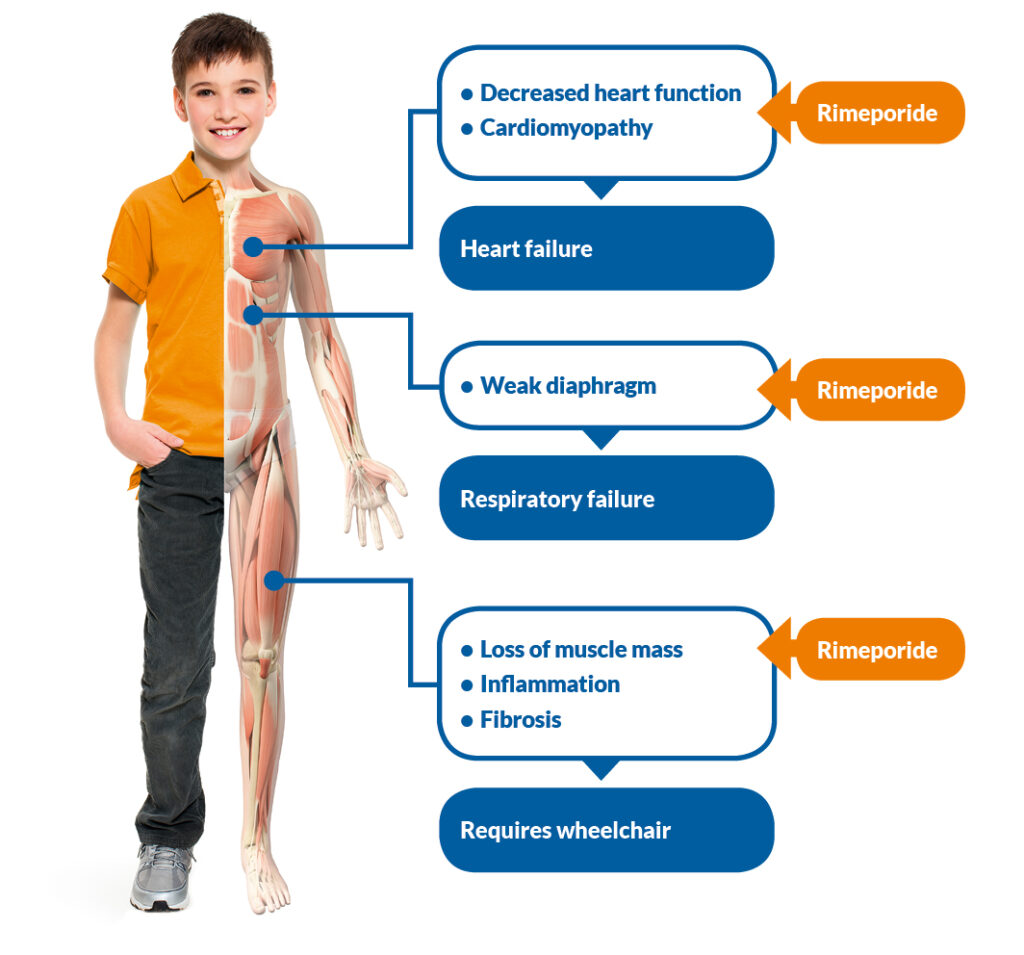Muscular dystrophies are inherited myopathies characterised primarily by progressively severe weakness.

Although it is generally believed that inherited diseases must be due to a missing or structurally abnormal protein, either an enzyme or a structural protein, this abnormality has not been identified in any form of dystrophy. It is conceivable, however, that the fundamental abnormality is in another organ, such as the liver or bowel and that the muscular abnormalities are secondary. According to the classification of human muscular dystrophies, there are
1) Duchenne dystrophy
2) Facioscapulohumeral dystrophy
3) Limb-girdle dystrophy
4) Myotonic muscular dystrophy.
None of the muscular dystrophies are common. Incidence rates vary from 5 per million births for facioscapulohumeral dystrophy to about 250 per million births for Duchenne dystrophy. Many cases are sporadic; the mutation rate of Duchenne dystrophy is high, and about two-thirds of the cases appear sporadically, with no other affected individual in the family.

The abnormalities in muscle involve all fibres randomly. Early, there is scattered evidence of necrosis and regeneration, with prominent variation in fibre size, including many fibres much larger than normal. Later, fibres disappear to be replaced by fibrous connective tissue and fat. Pseudo-hypertrophy is probably due to both true hypertrophy and increased fat accumulation and connective tissues. In myotonic dystrophy, unusual figures from ring fibres and sarcoplasmic masses or accumulations of sarcoplasm that are free of myofilaments.
Facioscapulohumeral dystrophy is distinct. Symptoms vary in severity so that some affected individuals never have any disability, whereas others become incapacitated early: there are all grades in between. INHERITED DISEASES—MUSCULAR DYSTROPHIES
The manifestations according to the classification of muscular dystrophy. Becker dystrophy has manifestations similar to Duchenne dystrophy, but the onset is later in childhood or adolescence, and the tempo is slower and more variable. This form may also be devastating, but some patients are able to function, albeit with limitations, well into adult life. The clinical similarities include pseudo hypertrophy of calf muscles. However, it is clear that although the two forms are similar, they are genetically separate: there are no mildly affected individuals in typical Duchenne families, nor are children affected severely in Becker families.
Facioscapulohumeral dystrophy is distinct. Symptoms vary in severity so that some affected individuals never have any disability, whereas others become incapacitated early: there are all grades in between. The first symptoms are apt to be related to difficulty in raising the arms or to the prominence of the scapulae. Weakness of the legs may affect pelvic girdle muscles, are equally prominent in scoliosis. The face always involves examination; the oral peri muscles may be more affected than those of the upper face, but ultimately patients develop difficulty in closing their eyes. The sternal head of the pectoral muscle is affected earlier than the clavicular head, a selectivity that can be detected on testing individual muscles, and leads to a peculiar appearance of the axillary fold of normal people is formed by the sternal portion of the pectoral muscle.

The manifestations of Limb-girdle dystrophy are also similar because the weakness of the muscle of the pelvic girdle usually initiates the syndrome, but symptoms start in late childhood and adolescence. Girls are affected as often as boys, and pseudo hypertrophy is rare. Waddling gait, difficulty in walking and climbing, and frequent falls are common. Occasionally, symptoms may begin in the shoulder girdle. In either case, there is usually weakness in all four limbs by the time patient seeks medical attention.
Myotonic muscular dystrophy diverges from the preceding types in several respects.
A) The distribution of weakness differs because cranial muscles are often affected, and limb weakness is initially more marked in distal muscles. Thus, weakness of the hands precedes shoulder weakness, and foot drop or steppage gait precedes symptoms of pelvic muscle weakness. Ptosis, Facial weakness, and dysarthria are signs not seen in the other forms of dystrophy.
B) Myotonia or difficulty relaxation may be symptomatic, and the patient may have difficulty letting go after a firm grip. Myotonia may cause other symptoms in patients with myotonia congenita, but in dystrophy, only the hands are affected by this stiffness. Myotonia of grip may be evident of examination and can also be elicited by percussing the thenareminence.
None of the muscular dystrophies are common. Incidence rates vary from 5 per million births for facioscapulohumeral dystrophy to about 250 per million births for Duchenne dystrophy.
C) Other systems are involved in the pleomorphic disorder. Cataracts appear sooner or later in all patients and are sometimes the only sign of the disease. Most men (but not women) have frontal baldness. Testicular atrophy affects most men, but often, after they have sired, children perpetuate the disease. The incidence of diabetes mellitus may be increased.
D) Conduction defects are common in the electrocardiogram and may lead to clinically significant arrhythmia or congestive heart failure.
According to the ancient system of pulse diagnosis, we can find out the problem of muscular dystrophy and can be given ancient treatment with herbal medicine to get better healing.
The author can be reached at [email protected]/ +91 9650696341

Leave a Reply